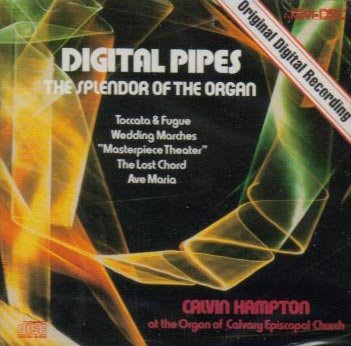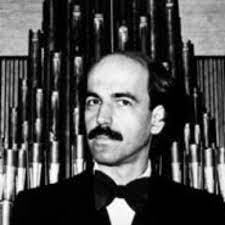
Digital Pipes
Performed by Calvin Hampton
KD1005 | Instrumental Music
| Name | Credit | |
|---|---|---|
 |
Calvin Hampton | Organ |
The Organ of Cavalry Episcopal Church, New York

KD1005 | Instrumental Music
| Name | Credit | |
|---|---|---|
 |
Calvin Hampton | Organ |
The recording locale is the Calvary Episcopal Church in Manhattan, New York City, where Hampton was organist and choirmaster for 20 years. (He died in 1984, not long after this recording was made.) The historic church was attended by several of the Roosevelt family, including Eleanor Roosevelt, who was baptized there with Theodore Roosevelt standing as godfather. President Chester Arthur was married there
As for the recording, I must first emphasize that the word “digital” in the title refers to the recording process, and not to the organ, which is a regular pipe organ–an instrument built in 1886 by the brothers Hilborne and Frank Roosevelt, and rebuilt in 1935 by the Aeolian-Skinner company. Further modified subsequently, including by Mr. Hampton, it appears here as a 4-manual, 83-rank, 3950-pipe instrument whose pipes range in length from one-quarter inch up to 32 feet. The organ’s tone quality is very fine indeed.
The program includes both Baroque and Victorian music by various well-known composers:
Bach, J.S.: Toccata and Fugue in D MInor
Clarke, Jeremiah: Trumpet Voluntary
Bach, J.S.: Sheep May Safely Graze from Cantata No. 208
Bach, J.S.: Jesu, Joy of Man’s Desiring from Cantata No.147
Mouret, Jean-Joseph: Rondeau from Sinfonies des Fanfares
Sullivan, Arthur: The Lost Chord
Wagner, Richard: The Bridal Chorus from Lohengrin
Schubert, Franz: Ave Maria
Franck, Cesar: Panis Angelicus
Mendelssohn, Felix: The Wedding March from A Midsummer Night’s Dream
Calvin Hampton was a noted church organist and a successful composer of church music, so it does not come as a surprise that most of the pieces here have some religious connection. Although the Bach Toccata & Fugue and the Mouret Rondeau are quite secular, the Clarke Voluntary is fitting for a church service, the Bach cantatas are religious in character, Sullivan’s Lost Chord uses religious imagery, Wagner’s Bridal Chorus refers to a ceremony traditionally connected to the church, the Schubert and Franck pieces refer explicitly to religious ideas, and Mendelssohn’s Wedding March, like Wagner’s Bridal Chorus is for a traditionally religious ceremony. Much of the music here is very widely known, meaningful, and symbolic–even dear–to a large proportion of people in general.